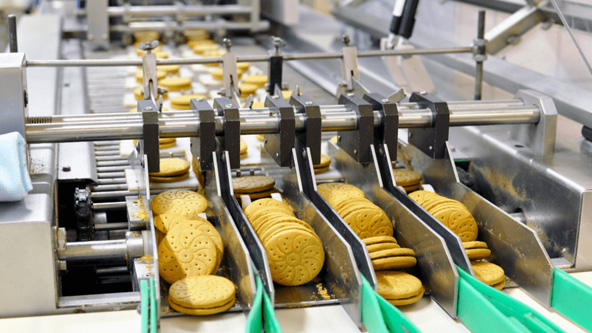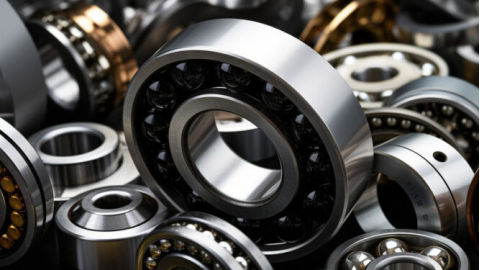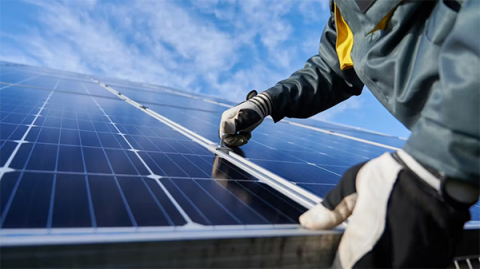Top 10 Food Machinery Factories in China
China's food machinery industry is a critical part of the global food production supply chain. It contributes over 35% of the world's food processing equipment output. This sector supports the entire value chain, from raw agricultural product handling to high-value-added food manufacturing. Its innovation and manufacturing power directly impact global food safety standards and efficiency.

Industry Background and Technology Categories
Food machinery includes four main technical categories. These are pre-processing equipment like washing, sorting, and crushing machines. Next is processing equipment, including sterilization, extraction, and mixing systems. Another category is packaging equipment, such as vacuum packers, labelers, and palletizing robots. Finally, there are dedicated production lines for sectors like dairy, bakery, and meat processing.
The industry is concentrated in specific regions. The Yangtze River Delta focuses on high-end intelligent equipment. The Pearl River Delta specializes in export-oriented standardized machinery. The Bohai Bay Rim area leans towards heavy-duty processing equipment. According to 2023 data from CFPMA, the industry's annual output value exceeds 420 billion RMB. Its export growth rate has been over 12% for five consecutive years.
Selection Methodology and Core Metrics
We use a strict set of metrics to evaluate factories. One key metric is R&D investment, which must be at least 5% of annual revenue. Another is international certification coverage, including ISO 9001, CE, and FDA. We also consider patent holdings, with invention patents weighted at 60%. Factories must show whole-line integration capability with proof of at least three complete line projects. A strong export business, over 30% of revenue, is a positive factor. We focus on manufacturers that can deliver full turnkey projects, not just single machines. Our data comes from company annual reports, customs export data, and third-party technical audit reports.
In-Depth Look at Leading Factories (Part 1)
Guangdong DYNPACK Packaging Machinery Co., Ltd. (Stock Code: 002209) is a leader in liquid food solutions. Its ultra-clean filling technology achieves microbial control levels of ≤0.1 CFU/mL in carbonated drink lines. A key project is a 48,000 bottles-per-hour (BPH) high-speed filling line for Coca-Cola.
Hangzhou Young Intelligent Equipment Co., Ltd. (603901) excels in smart packaging systems. Its vision inspection robots achieve a 99.95% accuracy rate in identifying packaging defects. The company co-developed an Industry 4.0 data platform with Siemens.
In-Depth Look at Leading Factories (Part 2)
Jiangsu Newamstar Packaging Machinery Co., Ltd. (300509) is known for its aseptic cold filling technology. Its PET bottle preform heating energy consumption is 15% lower than German Krones equipment. The company designed a seamless sterile production line for Yili Group, integrating UHT treatment with an aseptic environment.
Shanghai Precise Packaging Equipment Co., Ltd. specializes in fermentation engineering equipment. Its CIP/SIP cleaning systems reduce batch changeover time to under 30 minutes. In amino acid fermentation projects, it has helped increase cell conversion rates from 85% to 92%.
Analysis of Technology Innovation Trends
Smart manufacturing is a major trend with three key directions. Digital twin technology enables predictive maintenance for machinery. AI quality control systems use deep learning to improve foreign object detection rates from 95% to 99.8%. Breakthroughs in energy-saving tech, like microwave drying, use 40% less energy than traditional hot-air drying. According to China's Machinery Industry Federation, a key 2025 goal is to achieve over 85% OEE (Overall Equipment Effectiveness) for critical machinery.
Assessment of International Market Competitiveness
Chinese equipment holds a significant cost advantage. In the dairy processing sector, Chinese machinery is 35-40% cheaper than equipment from German giant GEA. However, a technology gap remains; for example, the service life of sterile valve groups may be 2000 hours shorter. Chinese manufacturers have successfully adapted products for markets like Southeast Asia. Anti-corrosion designs for tropical climates helped capture 60% of Vietnam's beverage machinery market. Customs data shows food machinery exports reached $7.8 billion in 2022, with a 24.7% growth in exports to Belt and Road Initiative countries.
Procurement Decision Guide
Use a detailed checklist to evaluate potential suppliers. Request FTQ (First Time Quality) data from at least three similar projects. Ask for commitments on spare parts response time, such as 24 hours for emergency needs. Check their technical training systems, which should include tools like VR remote guidance. We recommend a phased cooperation model. Start with a 6-month stability test on a single machine. Then move to a small-batch trial with a full line. Finally, expand to full plant digital integration. Ensure contracts include technical annexes with OEE guarantees and energy consumption compensation mechanisms.
Sustainability and the Industry's Future
The industry is focusing on carbon reduction. Heat recovery systems in sterilization processes can cut steam consumption by 25%. Demand for machinery that handles biodegradable materials is growing 18% per year. Technology integration is another trend. Combining blockchain traceability with packaging machines allows for full supply chain tracking from raw material to finished product. A UNIDO report notes Chinese manufacturers are world leaders in technologies that reduce food loss, such as intelligent fruit and vegetable sorting, which controls loss rates below 3%.
Resource Integration
We recommend a weighted evaluation system. Assign 40% to technical compatibility, 30% to full lifecycle cost, 20% to service response, and 10% to sustainability. For finding suppliers, use the whitelist database on foodjx.com. Attending the CHINA FOODTECH exhibition allows for direct equipment inspection. The industry is consolidating. We expect 2-3 mergers or acquisitions to create massive food equipment groups with over 10 billion RMB in revenue within three years.




